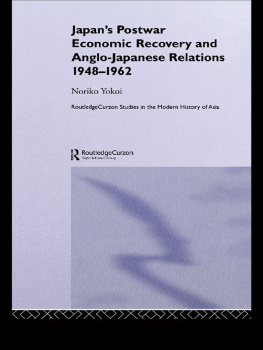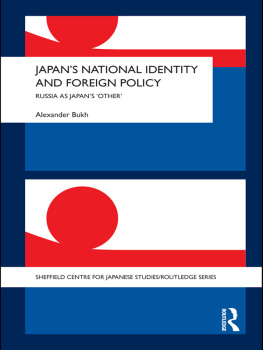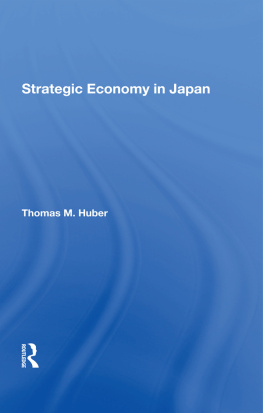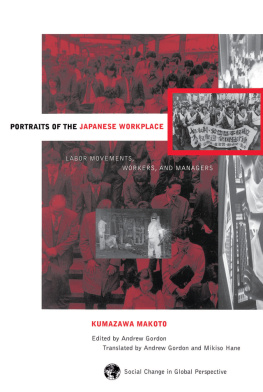E AST A SIA
H ISTORY , P OLITICS , S OCIOLOGY , C ULTURE
E DITED BY
EDWARD BEAUCHAMP
U NIVERSITY OF H AWAII
A R OUTLEDGE S ERIES
O THER B OOKS IN T HIS S ERIES :
M ODERN E DUCATION , T EXTBOOKS, AND THE I MAGE OF THE N ATION
Politics and Modernization and Nationalism in Korean Education: 18801910
Yoonmi Lee
P ROBLEMS OF D EMOCRATIZATION IN C HINA
Thomas G. Lum
T HE U NKNOWN C ULTURAL R EVOLUTION
Educational Reforms and Their Impact on Chinas Rural Development, 19661976
Dongping Han
M AOS P REY
The History of Chen Renbing, Liberal Intellectual
Jeanette Ford Fernandez
T HE R OOTS OF J APANS E NVIRONMENTAL P OLICIES
Amy Wong
T HE O RIGINS OF THE B ILATERAL O KINAWA P ROBLEM
Okinawa in Postwar US-lapan Relations, 19451952
Robert D. Eldridge
S OUTH -S OUTH T RANSFER
A Study of Sino-African Exchanges
Sandra Gillespie
G ENDER , E THNICITY , M ARKET F ORCES , AND C OLLEGE C HOICES
Obsevations of Ethinc Chinese in Korea
Sheena Choi
F ORMING THE A CADEMIC P ROFESSION IN E AST A SIA
Terri Kim
P RESS I MAGES , N ATIONAL I DENTITY , & F OREIGN P OLICY
A Case Study of US-Japan Relations From 19551995
Catherine A. Luther
C HANGES IN THE P ERMANENT E MPLOYMENT S YSTEM IN J APAN
Yukari Matsuzuka
C HINESE F EMINISM F ACES G LOBALIZATION
Sharon Wesoky
S TUDYING THE E NEMY
Japans Hands in Republican China & Their Quest for National Identity
Christiane I. Reinhold
Published in 2002 by
Routledge
29 West 35th Street
New York, NY 10001
www.Routledge-NY.com
Published in Great Britain by
Routledge
11 New Fetter Lane
London EC4P 4EE
Routledge is an imprint of the Taylor & Francis Group.
Copyright 2002 by Routledge.
All rights reserved. No part of this book may be reprinted or reproduced or utilized in any form or by any electronic, mechanical, or other means, now known or hereafter invented, including photocopying and recording, or in any information storage or retrieval system, without written permission from the publishers.
10 9 8 7 6 5 4 3 2 1
Library of Congress Cataloging-in-Publication Data is available from the Library of Congress
ISBN 0-415-93427-3
Dedicated to the Late Professor Terence K. Hopkins
Binghamton Sociology, a creation of the late Professor Terence K. Hopkins, stimulated my interest, expanded my knowledge, and trained me to be a well-rounded person, researcher, and instructor. If this dissertation has any value, I owe it to my teachers at SUNY-Binghamton. The world-system perspective became the foundation of my study thanks to the opportunities Professors Arrighi, Hopkins, and Wallerstein provided me at the Fernand Braudel Center. I thank Professor Wallerstein for supporting me throughout my study. Serving as the scientific secretary of the Trajectory Research Working Group under the guidance of Professors Hopkins and Wallerstein gave me valuable experiences in joint research. Binghamton Sociology was an exceptional place to meet people with unique and innovative ideas. My eyes were opened to the regional perspective by Professor Hamashita of the University of Tokyo when he presented a paper at the Fernand Braudel Center in 1992. Since then he has helped me expand the scope of my research. It was a great honor for me to have him as a member of my dissertation committee, and I am grateful to him for making a trip to Binghamton solely to attend my defense. As the chair of my committee, Professor Arrighi patiently looked after my progress. Without his consistent encouragement, it would not have been possible for me to finish this research. I also thank Professors Tomich and Selden for their valuable comments and suggestions throughout my studies at Binghamton.
Professor Hopkins kindly gave me an opportunity to be a graduate student at Binghamton Sociology. He showed me direction when I was confused, encouraged me when I was discouraged, and helped me to make my life in Binghamton an enjoyable one. It is my regret that his unexpected and premature passing prevented me from receiving his advice on my dissertation. I wish to honor him by continuing the legacies of his graduate school instruction, his methodological contribution to the world-system studies, and his struggle against social injustice.
I am grateful to my friends who helped me develop my ideas and enjoy my graduate student life at Binghamton. I am grateful to Alex, Beatrice, Becky, Donna, Edvige, Farouk, Festus, HQ, Jamie, Mota, Nobuyuki, PK, Shuji, Piya, Reiko, Richard, Sunaryo, and Thomas. My warmest memory of Binghamton is with my best friends Behrooz (Mohammad Tamdgidi), Mina (Anna Beckwith), Gloria and her husband Professor Hopkins. Sharing evenings with them was always fun and filled with stimulating discussion. In the last stressful week before my departure from Binghamton, Behrooz helped me tremendously to improve my dissertation. He helped me to comprehend what my dissertation is about and how I could finish writing it. Mina and Behrooz proof-read the draft for elimination of mistakes and for clarification of my expressions.
My special thanks go to my friends in Ann Arbor. Ingo helped me improve my writing, in addition to providing me and my partner Yoshie a place to stay whenever we needed to visit the University of Michigan library. Hiro and Helen supported me by continuously providing me with translation jobs. Danae lightened up our life by frequently visiting Binghamton and inviting us to Philadelphia and Washington, DC.
Although physically apart, my family in Japan has always been in my heart. My father, to my regret, passed away in February of this year before the completion of this dissertation. My mother was extremely pleased to hear that my student life was finally coming to an end. I owe her my life, and it gave me my utmost pleasure when she told me that her child-raising duty was now completed. My sister Yoshiko and her husband Yasushi helped me keep in touch with the Japanese social problems. They sent me materials that were vital to complete my research. I am grateful to my brother Hajime for letting me concentrate on my study by looking after my parents during my graduate-school years.
My utmost gratitude goes to Yoshie, my partner, closest friend, and cooking buddy. The pleasure of conducting research side by side with her was the primary driving force that led my study to completion.
Based on the world-system perspective and following the Hopkinsonian methodology of historical sociology, the transformation of the Japans national economy is studied by employing the concept of the structure of accumulation composed of the organizations of labor, credit, and markets. The structure of accumulation created in the rapid growth period, 1955-1973, was composed of the multilayered subcontracting system which integrated the segmented and differently rewarded workers into the accumulation process controlled by the major corporations, low-cost credits generated by the state and allocated to the major corporations, and monopoly space prepared by the Japanese state through industrial regulation/promotion. Japans rise eroded the very condition that favored its growth, bringing in rising wages, yen appreciation, and US protectionism. In order to overcome the crisis of over-accumulation, major industrial corporations rationalized workers in Japan, expanded their multilayered subcontracting system into East Asia, globalized credit management, and advanced into North America and Europe to secure monopoly space. Based on continuous regulation/protection of some sectors with ballooning state spending, the state bureaucracy became a parasitic rent-taker. The Japanese workers experienced income stagnation, prolonged work hours, employment insecurity, and deepened segmentation and polarization. The postwar Japanese miracle trifurcated into prosperous corporations, squeezed workers, and parasitic bureaucracy in the slow growth period, 1974-1991. Stagnant domestic markets drive corporations to increase exports through domestic cost cutting, which in turn dampens demand. This vicious cycle is supported by the global financial markets that circulate Japans excess savings into demand for Japans export. The Japanese structure of accumulation reached the limit in the 1990s as Japans national economy deflated. The East Asian miracle economies with similar structures of accumulation are following Japan. While global corporations erode national economies, the miracle economies of East Asia are in disarray and the US national economy continues to grow through deficit-financing. Although the Japanese miracle failed to deliver sustained prosperity to the majority of workers, the squeezed workers compete with each other to secure access to corporate prosperity, thereby supporting the very structure that squeezes and polarizes them. The miracle continues only for the major Japanese corporations that are East Asianizing and globalizing.









